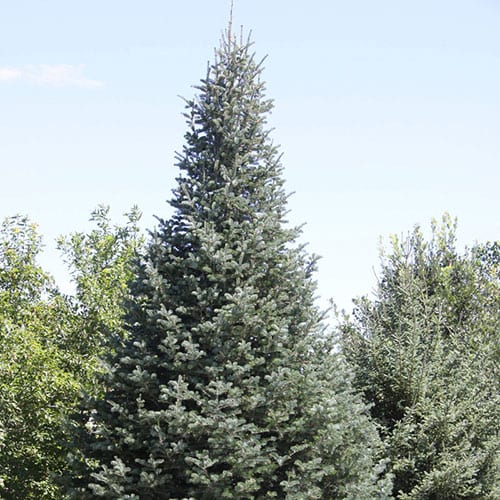
Fir, Concolor
(Abies Concolor)
Abies Concolor
| Size | Light | Hardiness |
|---|---|---|
| 30′ to 50′ | Sun to light shade | Zone: 3-7 |
| # Per Bundle | Bundle Type | Size |
|---|---|---|
| 50 | TR P-1 | 6″-12″ |
The firs are large, stately conifers with single trunks, whorled branches and very symmetrical cone shaped habits. Firs can be distinguished from other conifers by the combination of flat needles which are whitish beneath, and upright cones which stay on the tree and disintegrate after the seeds have been shed, leaving behind a single spikelike axis for a while. White fir has yellowish green first year branchlets, needles that are bluish green above, and rough, pale gray bark. The needles are about 2 in (5 cm) long with a pair of whitish bands on the underside. They appear to grow in two ranks on the branchlets, resulting in flattened sprays of foliage. The upright cones are cylindrical, about 5 in (13 cm) long and purplish green. White fir can get over 100 ft (30.5 m) tall and its conical spirelike crown becomes more columnar with age. Young trees are usually branched to the base, but large specimens are often devoid of branches for a third of their height. In cultivation, expect white firs to get 40-60 ft (12-18 m) tall. This is a very popular ornamental conifer and quite a few cultivars of varying habits and sizes have been named. ‘Argentea’ has silvery foliage. The new foliage of ‘Aurea’ is yellowish. ‘Dwarf Globe’ has thickly set bluish green needles and grows in a rounded mound just 3 ft (0.9 m) tall. ‘Compacta’ get about 4 ft (1.2 m) tall and wide and has beautiful grayish foliage. ‘Pendula’ has weeping branches. ‘Fastigiata’ is tall and narrow with erect branches. ‘Violacea’ has bright glaucus bluish white foliage. ‘Wintergold’ has foliage that turns yellow in winter.


